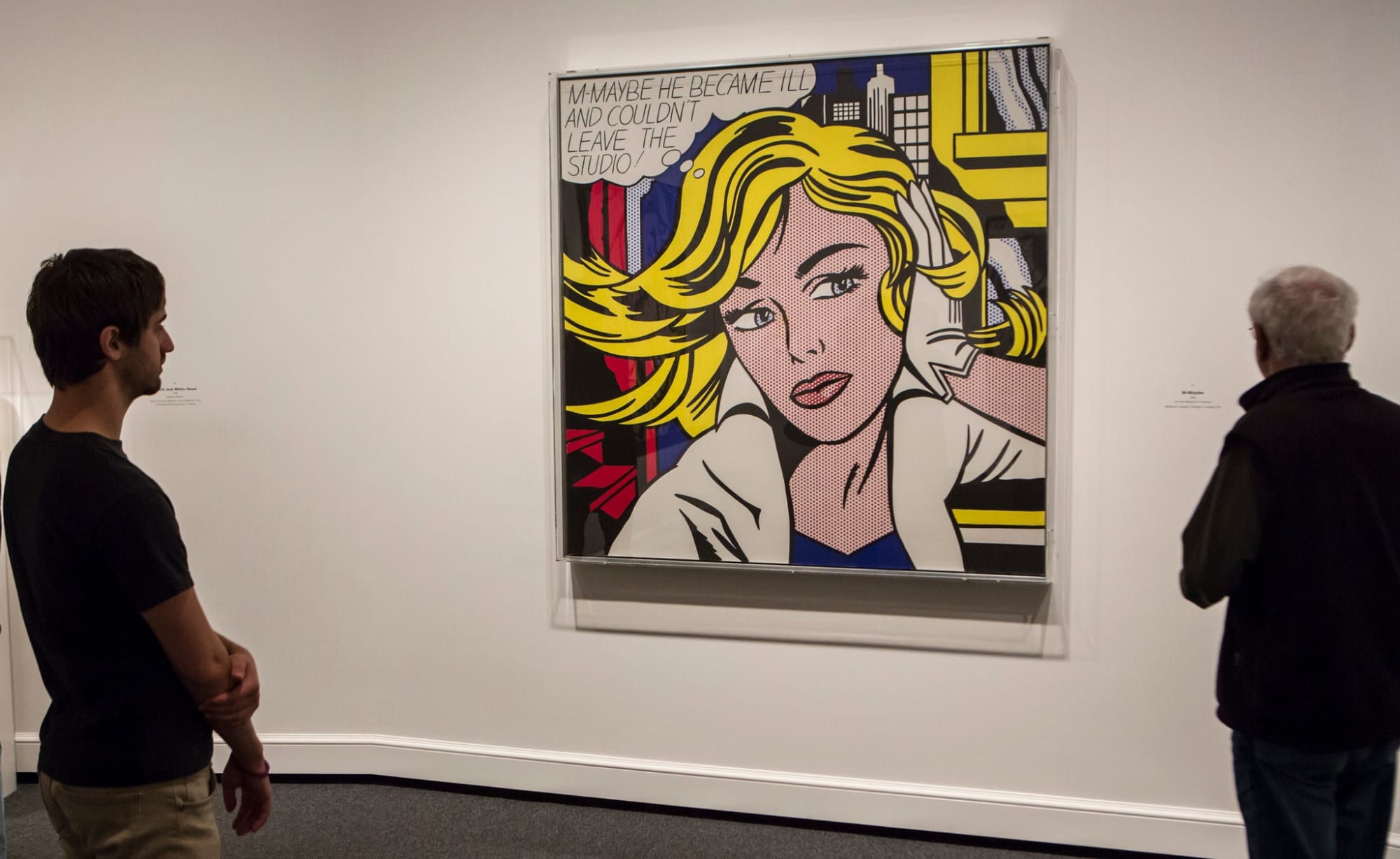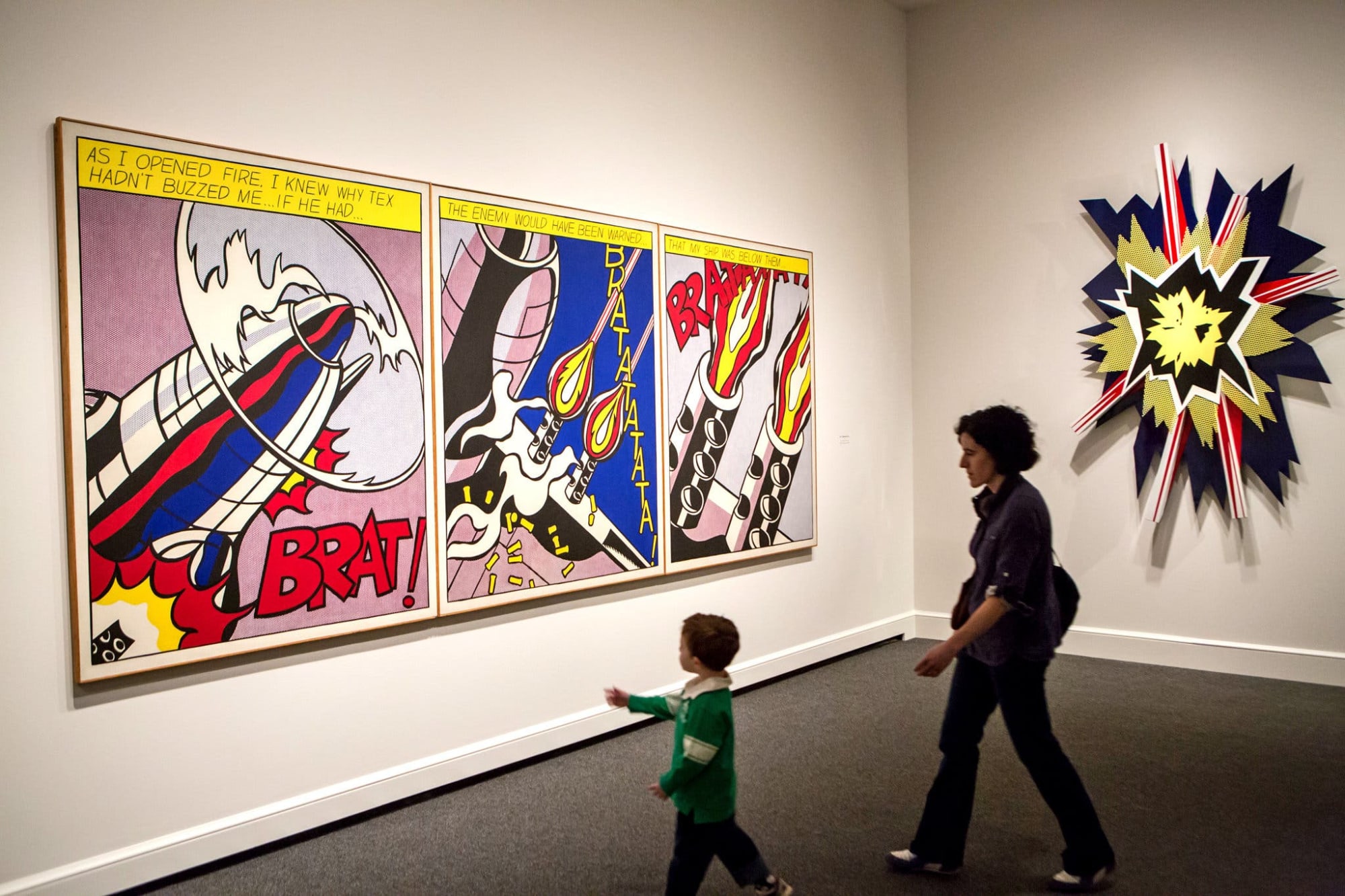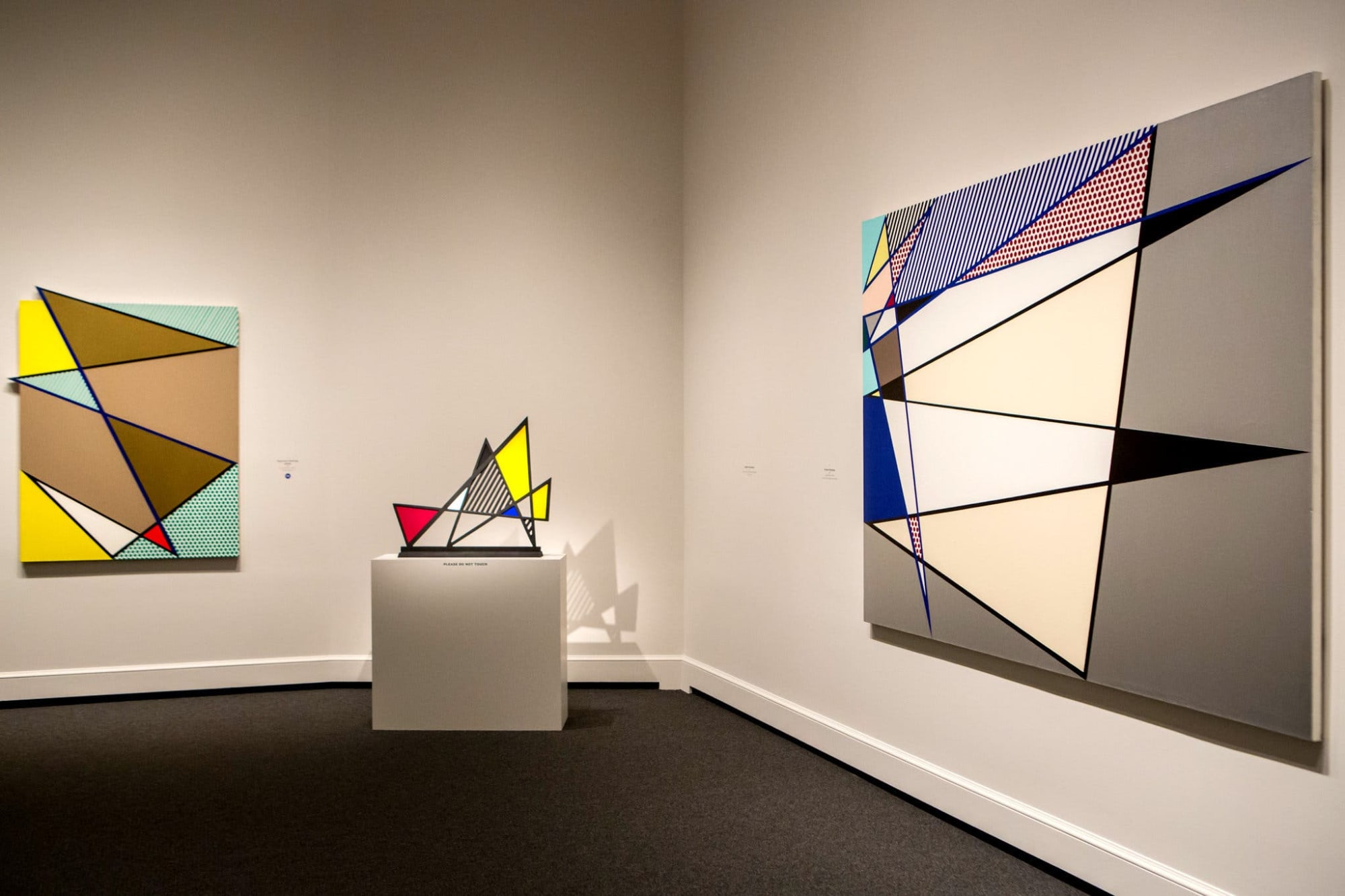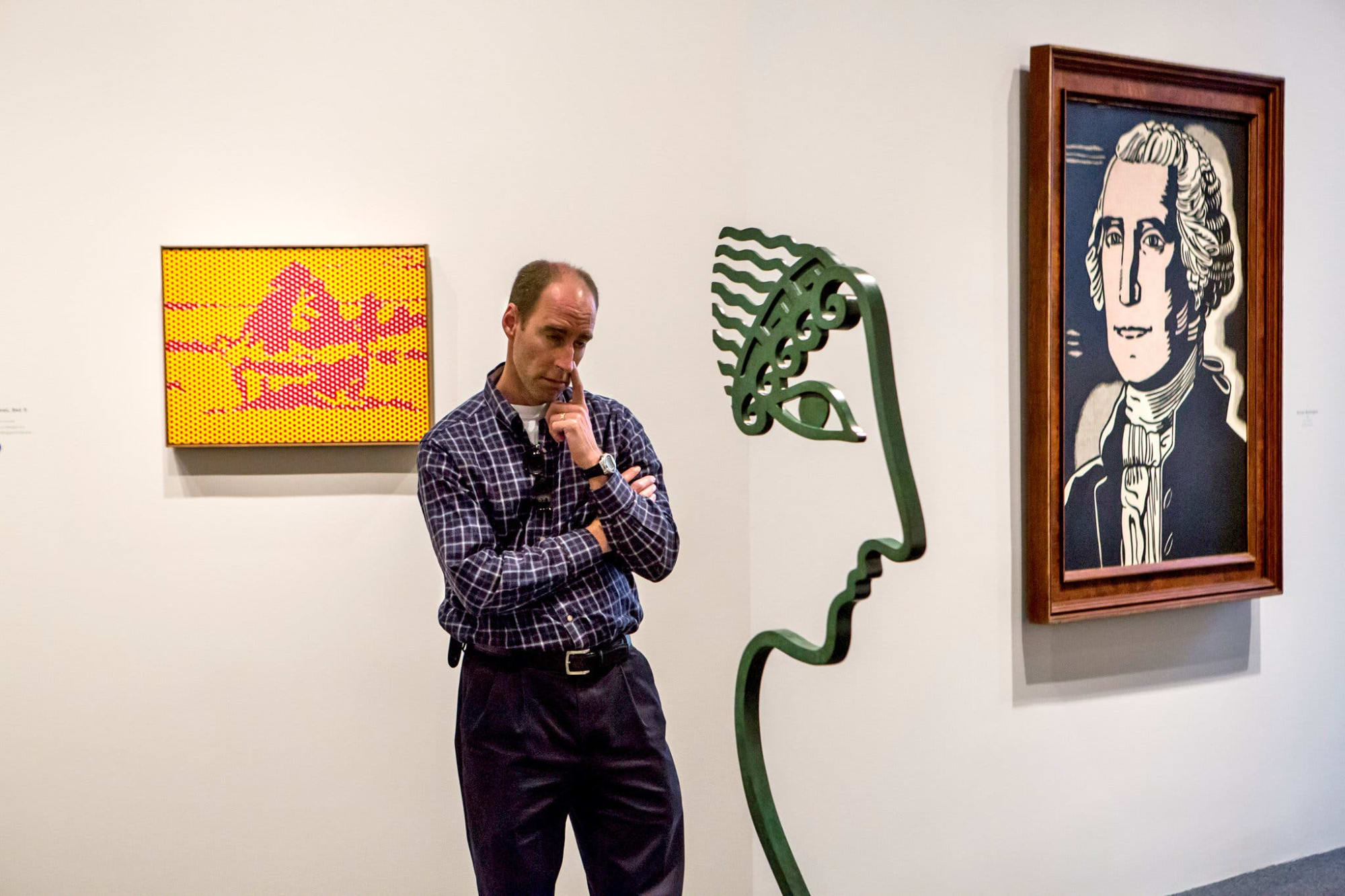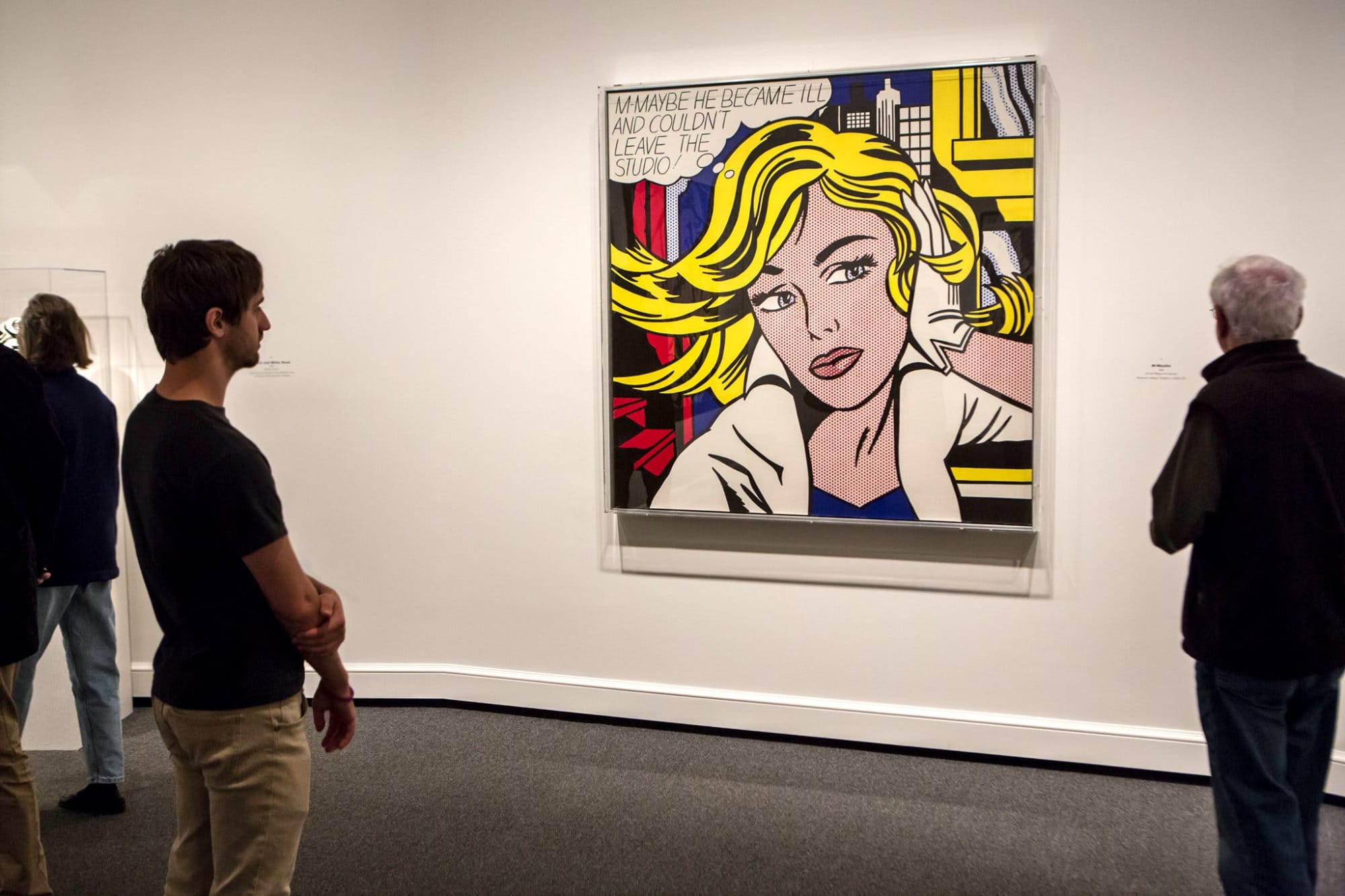Cartoon figures went out; cartoonish still lifes and art historical homages came in. The still lifes are clever, if slight; the homages, which stretch over many years, admirably diverse but unrevealing. The most elaborate are dedicated to Picasso, a Lichtenstein hero, and seem intended as affectionate spoofs. But they add nothing to the many spoofs, intended or not, that Picasso did of himself. Over all, the work gives little reason to consider an old view of Lichtenstein, as a spectacularly gifted lightweight, inapt.
But there are more interesting things ahead, among them the four large 1974 paintings collectively titled “Artist’s Studio.” Inspired by Matisse’s “Red Studio” and “Pink Studio,” these are near-walk-in-size depictions of rooms, or maybe one room, empty of people but filled with art. A connection to Lichtenstein’s other artist tributes is obvious. But in this case he has cooked up a self homage. Matisse and Picasso are on hand, but what we’re really getting is a jumbled and informal four-part Lichtenstein survey, beginning with “Look Mickey,” and going from there.
Chances are that only an artist whose work is as determinedly egoless as Lichtenstein’s could get away with such a salute to self, and even make it moving, which he does, tapping a strain of vulnerability and poignancy in his art that is otherwise hard to locate. It’s there, however, in six beautiful paintings of reflectionless mirrors installed, side by side, like icons, on one curving wall in the show.
And it’s there in the paintings called “Landscapes in the Chinese Style,” the last series he completed before he died. It’s a tribute, too, to the great nature painters of China’s Song dynasty (A.D. 960-1279), whom Lichtenstein learned about in art school and never forgot. Now, at the end, they push him to stretch himself, experiment, try new moves and retry old ones.
In one painting he swipes thick white paint in strong strokes across the canvas to evoke a gathered fog. In another, he makes his ever-present dot pattern do the equivalent of a slow tonal fade, as if the landscape were dissolving into a molecular mist.
These dexterous, assured, balance-defying performances give a glow to the end of the show, which has been organized by James Rondeau of the Art Institute of Chicago (where it originated earlier this year), Sheena Wagstaff of the Metropolitan Museum of Art and Harry Cooper, curator of the National Gallery of Art. But they still leave Lichtenstein’s status in the historical scheme of things unresolved.
It’s impossible not to compare him with Warhol, his Pop compatriot. Warhol not only radically changed art, but he changed America too. Lichtenstein changed art to some extent, but nothing else. The Warhol effect remains strong and pervasive. I’m not sure there is, or ever was, a Lichtenstein effect.
Yet his work looks like no one else’s, and some of it still feels fresh and audacious. He encapsulates, at least in his early work, the spirit of an era. He is embedded in the culture now, and unlikely to be dislodged.
Let’s call him an American classic, and leave it at that.


